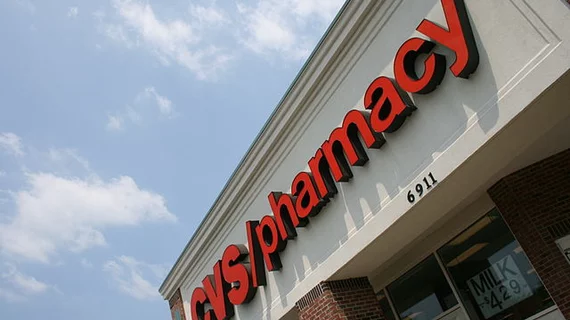Consumers are split on receiving primary care at CVS
The $69 billion merger between Aetna, one of the nation’s largest health insurers, and CVS, a major retail pharmacy chain and pharmacy benefit manager, has been touted as a “transformative moment” moment for the healthcare industry.
This merger, which closed in November 2018, has the potential to transform the consumer experience, according to a new J.D. Power pulse survey. Now that the deal has been completed, consumers are split on whether they'll move their care to the retailer.
The underlying principle of the merger is to provide primary care services to patients with chronic conditions, including diabetes, asthma and cardiovascular-related issues (hypertension and hypercholesterolemia). The expectation behind the new model is to allow patients to provide more services to people in their communities while preventing unfavorable and costly health incidences.
CVS is testing out the model using a new store format, in three Houston locations. Dubbed HealthHUB, the stores aim to be “a health hub” for residents in those communities.
“We believe that transforming the consumer health care experience begins with creating a new front door to health care,” Alan Lotvin, chief transformation officer for CVS Health, said in a statement. “Our new HealthHUB locations are just that—helping to elevate the store into a convenient neighborhood health care destination that brings easier access to better care at a lower cost.”
The J.D. Power pulse survey finds that enough people are receptive to the CVS-Aetna healthcare delivery model to create the potential for real change—if certain obstacles are overcome, according to James Beem, managing director, J.D. Power Health Intelligence.
Approximately 45 percent of the survey respondents noted they would consider receiving primary care services at a CVS-based clinic. That said, 55 percent of respondents said they would not or probably would not receive primary care services at the CVS-based clinic.
Younger patients between the ages of 25 to 44 were more likely to say they would seek primary care at CVS clinics—despite a recent survey suggesting that younger consumers are less likely to have a primary care physician, compared to older generation. Additionally, 51 percent of privately-insured patients were more willing to seek care at a CVS based clinic, compared to those who are insured through Medicare or other sources like the military.
“Less receptivity among older patients and Medicare recipients may tie to reticence regarding pharmacy-based care for higher acuity conditions,” the report read. “Older patients have a higher incidence of healthcare needs and more complex health issues.”
Though the merger hopes to provide both cost savings and convenience to patients, respondents would not be swayed by convenience when selecting a healthcare provider. About 58 percent of respondents said they “probably” or “definitely” would not switch to a CVS clinic if it was located closer to home than their current primary care physician. However, 42 percent noted they “probably” or “definitely” would switch for convenience.
When asked if they could lower their healthcare costs by selecting a CVS clinic for primary care, 47 percent of respondents said they would try CVS.
Of note, 65 percent of respondents believed integrating their care between a pharmacist, physician and a nutritionist would keep their overall health the same. A total of 20 percent of respondents said it would improve, and 15 percent said it would decline.
Given these statistics, there is more “foundational work” required to sway the consumer to this new model. Consumers should be given a clear definition of services offered, benefits of coordinated and consistent healthcare should be highlighted and short- and long-term cost benefits of choosing a retail pharmacy-based provider should be detailed.
At present, CVS operates approximately 1,100 walk-in medical clinics and 9,800 retail locations across the nation. Its pharmacy benefit manager (PBM) business serves approximately 94 million members, while the senior pharmacy care business serves more than 1 million patients annually.

